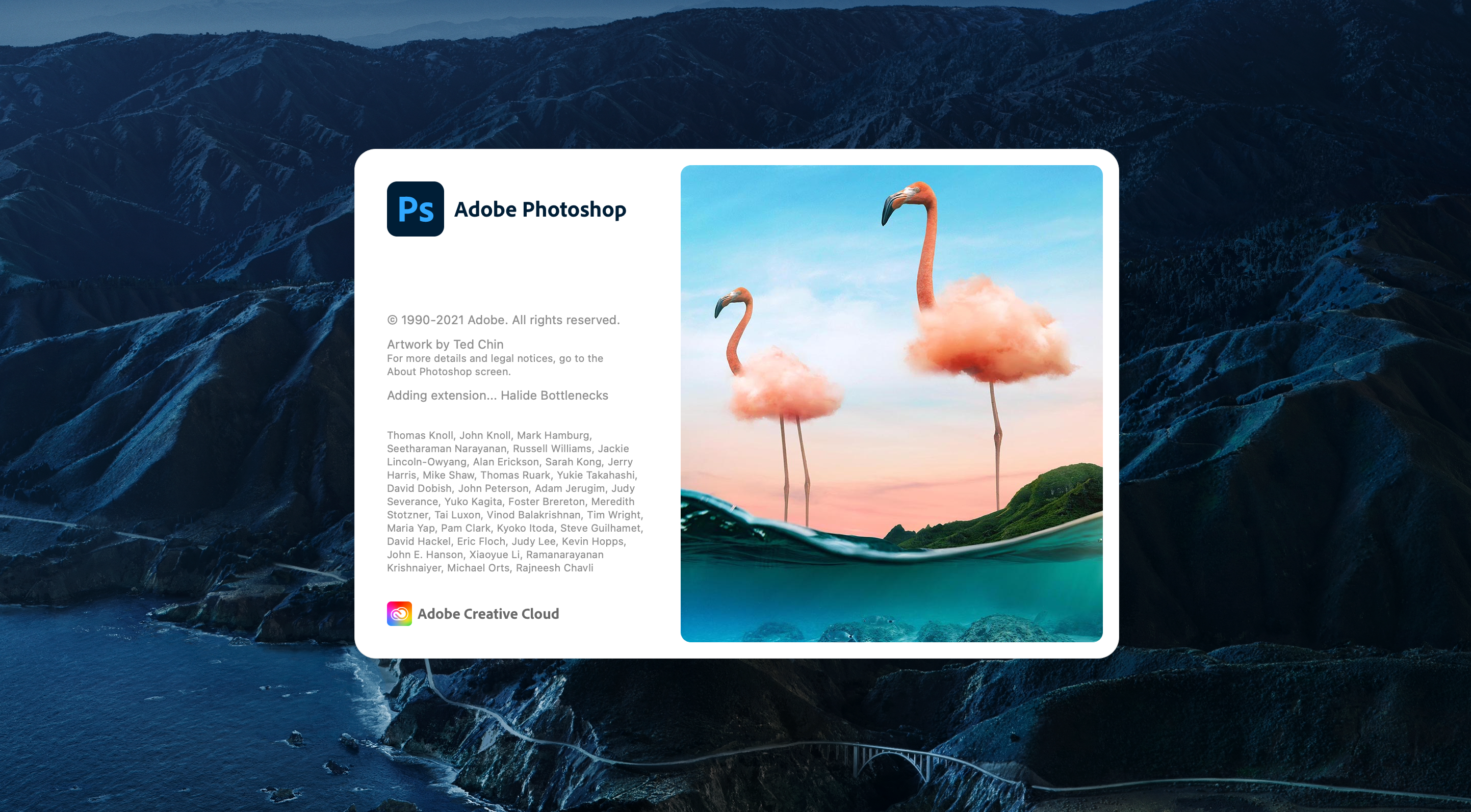Adobe on Wednesday released Photoshop for Apple's M1-based Macs, a key software package for the new family of computers, and it runs 50% faster than on Intel-powered equivalent laptops. Adobe announced on Wednesday that it updated Photoshop to support M1 Macs, and the company says it runs 1.5X faster. Adobe Photoshop M1 Support. However, according to PCMag which did some. 今天,M1 版本 Photoshop 正式脱离 beta 标签,进入稳定版本了。据 Adobe 的说法,M1 版 PS 的处理速度会较原来 x86 版本的快上 1.5 倍!使用者在启动、储存、应用滤镜和处理「内容感知填满」、和「选择物件」等重度运算的工作时,会更加有感。.
After a few months in beta, Adobe has launched a version of Photoshop for Apple’s M1 chip, bringing a major speed boost to the popular photo editing software. However, it also includes a few limitations that might make users want to stick to running the Intel version in Rosetta 2.
Adobe says the M1 native version is 1.5 times faster than “similarly configured previous generation systems,” so users should definitely feel the difference. The app will update via the Creative Cloud updater and will seamlessly switch to the new version when relaunched. Adobe says legacy versions of Photoshop prior to 2020 will not support the M1 chip.
PetaPixel ran some speed tests comparing the Rosetta version to the native M1 app, and the speed boosts are very noticeable. In their testing using PugetBench, the Mac mini running the Apple Silicon-optimized Photoshop recorded the second highest overall score they’d ever seen.

However, the M1 version of Photoshop for M1 MacBooks and the Mac mini isn’t identical to the Intel version. Here are the features that aren’t available in the M1 version yet, according to Adobe:
- Import, Export, and playback of embedded video layers
- Shake Reduction filter
- Preset Syncing
- Share an image button / Quick Share
- Create new Library from document / Libraries Panel menu command
- Home Screen > Shared with you and Invite to edit / Collaborative Editing features.
- Opening or placing U3D formatted files
- Starting Bridge from Photoshop menus

There are also a handful of known issues Adobe is working on including Issues when exporting SVG files and a black screen when viewing a 3D document. Adobe offers workarounds while it works to fix the problems.
For most users, these won’t be debilitating limitations, but if you need any of the features here, you can always switch to the Rosetta version. Head to your Applications folders, right-click on the app icon, and then “Get Info” to bring up details and options about the app. Finally, check the “Open in Rosetta” box to force the Intel version to launch.
Update 11:50AM ET:Added a link to PetaPixel’s testing.
Premiere Pro, Premiere Rush, and Audition builds with native support for new Apple M1 chipsets are available in public Beta today. The new Apple M1 platform offers improved performance and greater energy efficiency. Transitioning the Creative Cloud applications to the new platform will allow users to take advantage of the new technology.
Apple M1 Chip And Adobe
State of Creativity 2020
Get a global pulse on how 600 creatives from around the world are rising to the challenges of 2020, where they see the most permanent change in their industry, and how they are redefining their craft.
Premiere Pro Beta for Apple M1
The M1-native Premiere Pro Beta includes the core editing functions and support for the most widely used codecs: H.264, HEVC, and ProRes. Since Premiere Pro is built on a large codebase with support for a wide range of media and functions, we are taking a phased approach as we build out native Apple M1 support. This allows us to validate performance for specific parts of the application before we add new components.
This graph compares export times for the current high-end 16” Intel MacBook Pro, the current 13” Intel MacBook Pro, and the new 13” Apple M1 MacBook Pro. We will continue to optimize native M1 performance during the public Beta.
Adobe Sensei features, like Scene Edit Detection, will see performance boosts, thanks to dedicated machine learning support in the Apple M1 chipset. In this case, speed gains are also reflected in the current release version of Premiere Pro using Rosetta 2 emulation mode.
Users should note that the Premiere Pro Beta for Apple M1 incorporates the latest builds of our new captions workflow, which requires a project file format upgrade. We recommend creating a copy of current projects for Beta testing to avoid compatibility issues for any ongoing production work.
Limitations for the initial Premiere Pro Beta on Apple M1 hardware include third party integrations, such as Transmit reference monitoring hardware, plugins, extension panels, and control surfaces
Premiere Rush Beta for Apple M1
The M1-native Premiere Rush Beta includes core editing functions, support for H.264 video, the ability to add titles and audio from Rush’s built-in libraries, and will allow users the ability to create projects and export locally on Apple M1 devices. Additional format support, syncing projects between devices, and exporting to social platforms will be introduced in future Beta builds.
Audition Beta for Apple M1
The Audition Beta with native Apple M1 support already shows performance gains for many audio effects. Other improvements include real-time performance for the Spectral Frequency Editor. The Audition Beta for Apple M1 hardware incorporates most of the existing audio editing features but does not yet have support for video playback, extension panels, or some third-party formats and integrations.
/cdn.vox-cdn.com/uploads/chorus_asset/file/22187520/PPro.jpg)
| Animation |
|---|
| https://hlx.blob.core.windows.net/external/5c1c36934876d015fa2b3b33a5fda4df748492d8#image.gif |

Adobe Premiere M1
Spectral Frequency real-time rendering at 16K FFT in Audition is shown above. The Spectral Frequency Editor provides a visual representation of audio and Photoshop-style tools for precision editing.
Running current versions in Rosetta 2 emulation mode
While we complete the Apple M1-native versions of our applications, users can install and use the existing release versions using Rosetta 2 emulation with Apple M1 devices with macOS 11.0 (Big Sur). An issue with Roto Brush 2 in After Effects in Rosetta 2 will be addressed in an upcoming release. Please note that third party integrations have not been tested in Rosetta 2 emulation mode.
Native Apple M1 support coming in 2021
Release versions of Premiere Pro, Audition, and Premiere Rush with full native support for Apple M1 systems on macOS will be available in the first half of 2021.
Adobe M1 Support Photoshop
Work on native Apple M1 support for After Effects and Character Animator Apple M1 will begin in 2021.
Test the Beta builds on Apple M1 devices
Adobe M1 Beta
The Beta builds for Premiere Pro, Premiere Rush, and Audition with native Apple M1 support can be installed directly from the Creative Cloud Desktop application. Users with Apple M1 devices are invited to test the new Betas today and share their feedback with our product teams.

/cdn.vox-cdn.com/uploads/chorus_image/image/68941301/959F9708_FDD3_4A17_ACD9_550FE130F90D.0.jpeg)